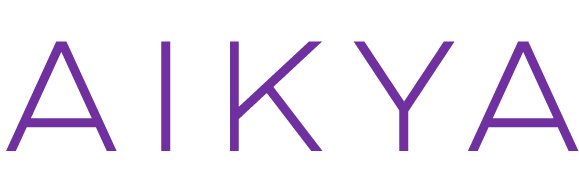The Investment Manager is a certified B-Corp. The Board, as per The Investment Manager’s Articles of Association, is obligated to consider the impact of our business on all stakeholders. The Aikya Global Emerging Markets Fund has the clear objective to make a significant impact when it comes to the sustainable development problems facing Emerging Market countries. They believe they do so by investing in responsibly managed, high-quality companies.
All portfolio companies are measured against the 6 portfolio-level sustainability impact goals described above. The indicators related to these goals do not have minimum thresholds, however the Investment Manager does expect portfolio companies to evidence continued progress against these indicators over a reasonable timeframe. More detail on the specific indicators that support the goals is included below:
Goal 1: UN SDGs
To measure the impact of their funds, the Investment Manager analyses the revenues generated from their portfolio companies’ various products and services and assess their contribution to each individual SDG at a sub-target level.
The Investment Manager’s 2030 objective is to have 100% of the Aikya Global Emerging Markets Fund – UCITS Portfolio (Aikya Portfolio) invested in companies that make a significant contribution to at least one UN SDG.
Goal 2: Carbon Emissions Data
The Investment Manager Portfolio’s carbon footprint is calculated in tonnes of CO₂/ $bn of revenues. The Investment Manager attributes investee company’s greenhouse gas emissions to the portfolio based on the position size of the company in the portfolio. The data we report represents Scope 1 and 2 emissions. Meaningful Scope 3 calculation methodologies are still a work in progress for most companies in the Emerging Markets universe and therefore are of insufficient quality for consistent reporting at this stage. Once they achieve higher quality, the Investment Manager will include Scope 3 emissions in the footprints.
In almost all instances, the Investment Manager’s Portfolio has lower carbon intensity vs the benchmark sectors.
Goal 3: Other Environmental Metrics
Portfolio companies are also analysed against a host of other environmental metrics, including:
- Energy usage.
- Adoption of renewable energy
- Water usage and intensity
- Waste consumption and intensity
- Hazardous waste
The Investment Manager subsequently created an Environmental Resource Intensity measure, which combines the various relevant environmental related indicators (ex-carbon).
This measure is specifically adapted for each different industry.
Goal 4: Breaches of Social Stewardship
At a high level, the Investment Manager believes that businesses do not exist in isolation. Their fortunes are inextricably linked to the communities they inhabit, and to those whom they are obligated to behave in a fair manner. The Investment Manager therefore monitors the performance of each company in the portfolio to ensure that they remain good corporate citizens.
The Investment Manager tracks every such incident of poor social stewardship. Examples of poor social stewardship include (but not limited to): unfair treatment of customers, abuse of local communities, negligent safety culture within the operations, poor quality control in manufacturing, or a breach of customer data and privacy. The Investment Manager also avoids companies that could be aiding human rights abuse and not paying their fair share of taxes to governments.
The Investment Manager measures the number of Aikya Portfolio companies that displayed more than one incident of poor social stewardship over the previous three years.
The Investment Manager believes a single incident could just be due to bad luck, but a repeated breach of social stewardship is often a symptom of a systemic problem
Goal 5: Shareholder & Board Composition
The Investment Manager measures the percentage of the Fund’s Portfolio invested in companies with either a large shareholder whom the Investment Manager trusts or a truly independent board.
The reason the Investment Manager does this is that they believe good governance is central to the delivery of sustainable development. At a company level, it requires long-term alignment of shareholder and management interests, a well-functioning board, robust internal controls, and an executive remuneration structure that is fair and aligned with the long-term interests of all stakeholders.
The Fund’s Portfolio is invested mainly in businesses that are majority-owned by an entrepreneur or business family.
Goal 6: Diversity & Inclusion
Given the socio-economic context of Emerging Markets, achieving a healthy gender balance within the workforce is a challenge for companies operating within these countries. The Investment Manager assesses a company’s gender balance from the following angles:
The number of women relative to the total size of the work force. A company with at least 40% of their work force is women is regarded as gender balanced.
The number of women at specific levels of the organisation, relative to their male peers. This shows how well women are able to progress their career within a company. This measure is disclosed by very few companies within the investable universe.
Gender pay gap illustrates the difference in average earnings between women and men for the equivalent role. This measure is not disclosed by most of the companies within the investable universe, though some countries like Taiwan have made reporting mandatory.
The strength of Human Resources policies in supporting women within the workplace, for example policies related to maternity and paternity leave.
A qualitative assessment of the work culture and how it supports female employees. Currently, the quantitative measure which the Investment Manager uses to assess gender balance at the portfolio level only includes Point 1, because data disclosure on other aspects of gender balance is poor.




